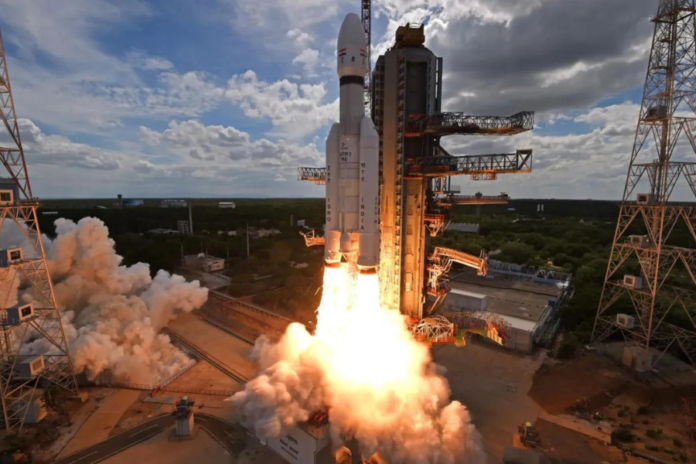Just days after a Russian lander’s failure, India’s space agency on Monday made available pictures taken by one of its spacecraft as it proceeded towards an attempt to land on the lunar south pole.
With Russia, the Chandrayaan-3 spacecraft of the Indian Space Research Organisation (ISRO) has been competing to be the first to touch down on the lunar south pole, an area whose shadowed craters are believed to hold water ice that may support a future moon settlement.
Chandrayaan-3 was scheduled to land on August 23 at the time that the failure of Russia’s Luna-25 mission became public knowledge on Sunday, according to ISRO.
ISRO reported on Monday that all systems on Chandrayaan-3 are “perfectly” operating and that no unforeseen circumstances are expected on the day of the Moon landing.
India is making a second effort to land on the south pole of the moon with this project, whose name, Chandrayaan, means “moon vehicle” in Hindi and Sanskrit. The orbiter on ISRO’s Chandrayaan-2 mission in 2019 was successfully launched, but the lander collapsed.
A landing at the south pole is challenging due to the rough terrain, but a successful first landing would be remarkable. The water ice in the area could provide future expeditions with water, oxygen, and fuel.
Images from the ISRO spacecraft’s Lander Hazard Detection and Avoidance Camera, which is intended to assist in locating a secure landing site for the spacecraft, were made public on Monday. The images showed craters on the moon’s surface.
The Chandrayaan-3 lander module detached from the propulsion module last week. Chandrayaan-3 is India’s moon mission, which launched on July 14.
In light of the administration of Prime Minister Narendra Modi’s efforts to encourage investment in commercial space launches and allied satellite-based industries, a successful lunar landing would signal India’s emergence as a space power.
Additionally, it would improve India’s standing as a provider of affordable space engineering. With a budget of roughly 6.15 billion rupees ($74 million), the Chandrayaan-3 was launched with less money than it would have taken to make the 2013 Hollywood space thriller “Gravity”.
Following the former USSR, the United States (US) and China, a successful mission would make India just the fourth nation to successfully land on the moon.
ISRO researchers claim to have taken lessons from the prior moon mission’s failure and made adjustments to Chandrayaan-3 that would increase the likelihood of a successful landing, including making it feasible to land safely in any location within an expanded landing zone under challenging circumstances. Additionally, it has more solar panels, more gasoline, and stronger legs.
Executives in India’s emerging space sector also anticipate growth. Since India allowed private launches in 2020, the number of space startups in India has more than doubled.
“The next 3 days will be nothing less than ‘terrific’! Eagerly looking forward to the landing!”, Pawan Chandana, co-founder of Skyroot, which launched India’s first privately built rocket last year, posted on X, formerly called Twitter.



